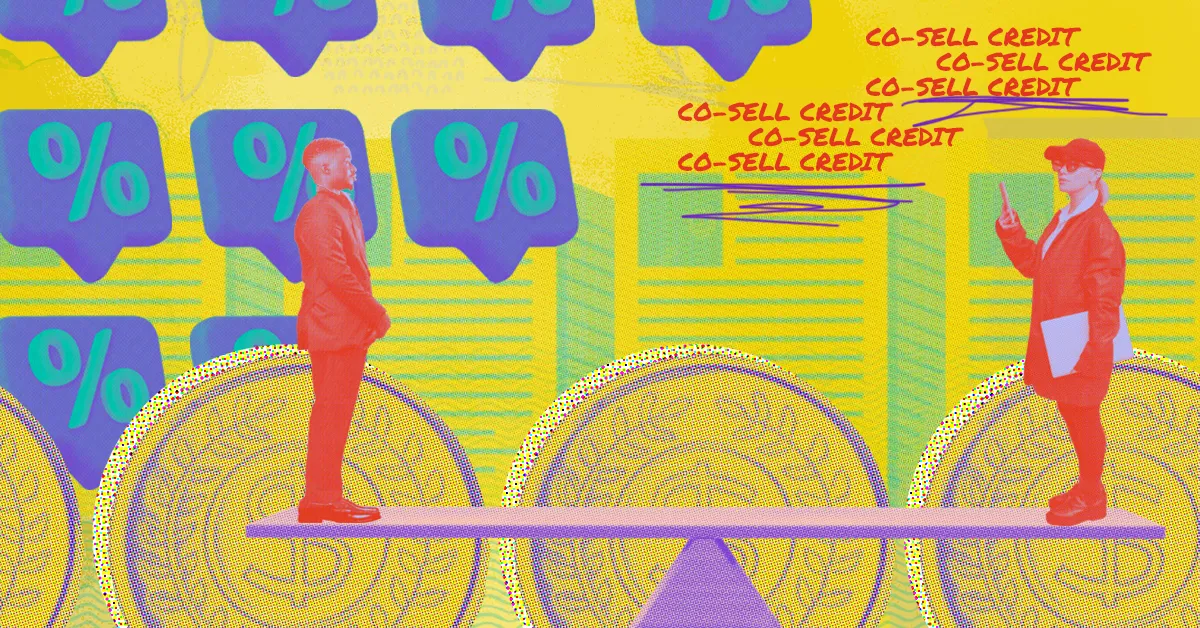What do you want to achieve with your partner program? Maybe you want to get as many people as possible to sign up. Maybe you want to increase brand awareness and get your business’ name out there. But in the end, the main objective is always to drive revenue for your business.
This is why a good landing page is so important to enticing partners and telling them all about your program. You don’t simply want people to click into it and then click back out, you want them to stay, see what you have to offer and sign up for your program if they’re the right fit. So is there a secret to building a landing page that will excite and educate prospective partners?
PartnerStack’s former Product Marketing Manager Brad Tiller has expert tips and tricks on how to build a revenue-driving partner program landing page — just keep reading.
What is a partner program landing page?
When someone clicks on a link on a webpage, that link takes them to a new page. Sometimes this new page is a landing page, which is one with the specific purpose of converting visitors into leads. It’s designed to entice visitors to find out more about your partner program and learn what’s in it for them if they sign up. Most importantly, it makes it easy for them to sign up.
How do you create an effective partner program landing page?
Tiller identifies five best practices that will help you create a strong landing page that encourages partner signups
Make it clear how much partners can earn near the top of the page.
Let’s be honest: the core reason why people join partner programs is to earn money. So, the first thing most potential partners want to know is how much they can earn. This is why you need to make the potential earnings clear right from the start. A good way to do this is to summarize the potential earnings in a larger font or heading so that it immediately catches the eye. You can then elaborate by explaining in a few short steps how the program works and how many referrals are required to earn a certain amount or other reward. Be sure to mention discounts or other incentives as well. Finally, add a call-to-action button to sign up, which will take them to the form they need to fill out to start the application process.

Related: A beginner’s guide to earning money with B2B affiliate marketing.
Help partners understand if they’re a good fit for the program.
In this section, explain the kinds of partners that are ideal for your partner program. These can be professional marketers or marketing agencies, influencers with a marketing audience for your product, podcasters and podcast production services that record podcasts on related topics, or individuals or businesses who already use and love your product. You can add the logos of partners who’ve already joined your partner program — the more recognizable, the better. This adds credibility to your program. End the section with another call-to-action button to encourage sign ups.
Include quotes from successful current partners
While this isn’t a must, it always helps to add a testimonial from at least one existing partner to explain what the program has done for them. It acts as a short review to tell potential partners that your program is worth participating in. Like the logos of existing partners, this adds credibility. However, Tiler advises that you don’t overdo it with the quotes. You want to keep the page concise, simple, and easy to navigate, so one or two quotes are sufficient. You can always add a link to a “reviews” section.
Include an FAQ section
While it’s very useful to have a section where you explain briefly the special features and benefits of the program, you don’t want to bombard potential partners with a wall of text. However, they will want more information before they sign up. An FAQ section with drop-down buttons allows you to cover everything a potential partner might want to know, such as how exactly the program works, how much and how often they get paid, how they get paid, how you track their referrals, and what assistance you provide. The drop-down buttons allow you to display only the questions at a glance, so that the potential partner can then click on the ones they need answers to. Tiller notes that this design keeps things clean, uncluttered and easy to navigate. The end of the FAQ section is another good place to add a call-to-action button to sign up.
Link to your landing page in your site’s header and footer navigation
It’s more common to link in the footer and leave the header navigation for information like the different products and pricing, Tiller says, mentioning both as best practices.
Related: Everything you need to know about inbound vs outbound partner recruitment.
Use this landing page template to get started
If you’re new to creating landing pages, you may find a landing page example very useful. Tiller has created a free template that you can use to create your own landing page. You can also share it with your vendors! Download it here.
Partner program landing page design
It’s always best to get professionals to create the copy for your landing page and to design it. Here are some tips to keep in mind:
- Keep the most important information above the fold. This way, the potential partner doesn’t have to scroll down to find it.
- Keep the copy concise and conversational. Use “you” and “your” pronouns to make the reader feel like you’re talking to them directly.
- Don’t fill your landing page with tons of text. Have clear headings and use white space to add visual interest that doesn’t feel cluttered.
- High quality images add visual interest and will entice people to engage with the page. They should be relevant. Avoid stock photos with no clear links to the text.
- Cater to your target audience, choosing images that reflect your ideal partner profile. Use images with people of a similar age and background.

See more: How to set strategic partnership KPIs to drive revenue in 2024.
- Remember your branding when choosing colors and fonts. If your brand colors are shades of blue and green, for example, use those colors in your headings or to frame images. Also stick to a font similar to the ones you use in your logo and on your letterheads. Be sure that the font is legible on all devices.
- Make your CTA buttons in a contrasting color so that they stand out. After all, you want people to click on them!
- Keep page load time in mind. If it takes forever to load high-resolution images and animations on your landing page, many potential partners will click out and go somewhere else. Of course you want crisp, clear images, but Tiller recommends testing your page to find the perfect balance between resolution and download time to avoid high bounce rates.
- Optimize the design for different devices. Some people may use a desktop computer or laptop to visit your landing page, while others will use a mobile phone. Make your landing page responsive. This way, someone on mobile can navigate the page just as easily without having to deal with tiny, illegible text.
- Test your landing page. This doesn’t mean only testing that the page downloads and that links work, it also means A/B testing to see which elements are more likely to earn leads and conversions.
With these tips and templates in hand, you’ll be better set up to land those new partners and drive more revenue for your program.
This article was originally published January, 2023.

















